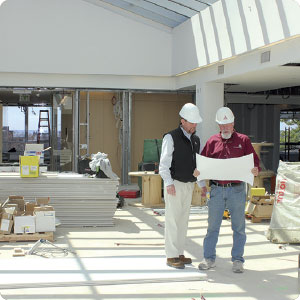With costs constantly escalating and funds becoming tighter every year, getting the most for your money has become everyone’s primary goal. Construction Management is the construction industry’s answer for customers who are dissatisfied with the traditional general contractor (GC) method of building projects.
Essentially, Construction Management is a two-phase approach to a project: pre-construction planning and the construction itself. The strengths and benefits of a Construction Management project lie in the pre-construction phase. The success of a Construction Manager (CM) is determined by the ability to map out all pre-construction variables and advise the clients as to their solutions. In short, Construction Management is a pro-active solution to project delivery that is implemented by a team approach and accountability.
What does a Construction Manager do?
- The CM works hand-in-hand with the Owner and Architect/Engineer as a team member, representing the Owner’s interests throughout the project, from infancy through the pre-construction and construction phases.
- The CM pulls together the master schedule, outlining goals for all phases of design, budget, final bidding, and construction.
- The CM reviews all drawings not only for thoroughness but also for constructability and how they relate to time, money, and the master schedule.
- Long lead items are identified and ordered before completion of the construction documents to avoid construction delays.
- The CM creates detailed budgets so the Owner can forecast cash requirements.
- The CM provides documentation of expenses, verifying all charges to the project.
- After review of design changes, the CM advises the Owner immediately of any cost or time impact so that decisions can be made on the spot.
- The CM provides competitive pricing from qualified bidders in all trades, ensuring the Owner a quality product at the right price.
What Projects are particularly well suited for Construction Management?
- Projects with severe time restraints
- Multi-phase projects being built under occupied conditions
- Highly creative but cost conscious projects
- Cost constrained projects that need a Board approval



